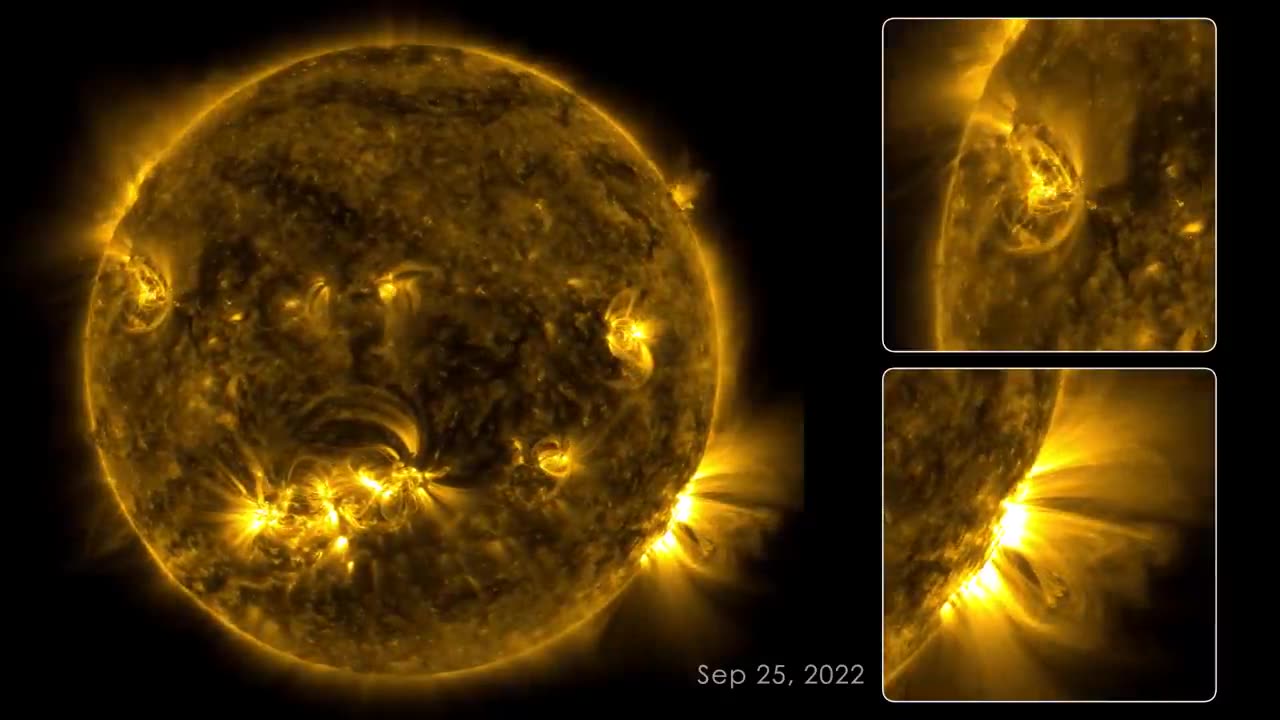Premium Only Content

"The Infinite Frontier: NASA's Epic Journey into Space" 133 Days on the Sun
chronicles solar activity from Aug. 12 to Dec. 22, 2022, as captured by NASA’s Solar Dynamics Observatory (SDO). From its orbit in space around Earth, SDO has steadily imaged the Sun in 4K x 4K resolution for nearly 13 years. This information has enabled countless new discoveries about the workings of our closest star and how it influences the solar system. With a triad of instruments, SDO captures an image of the Sun every 0.75 seconds. The Atmospheric Imaging Assembly (AIA) instrument alone captures images every 12 seconds at 10 different wavelengths of light. This 133-day time lapse showcases photos taken at a wavelength of 17.1 nanometers, which is an extreme-ultraviolet wavelength that shows the Sun’s outermost atmospheric layer: the corona. Compiling images taken 108 seconds apart, the movie condenses 133 days, or about four months, of solar observations into 59 minutes. The video shows bright active regions passing across the face of the Sun as it rotates. The Sun rotates approximately once every 27 days. The loops extending above the bright regions are magnetic fields that have trapped hot, glowing plasma. These bright regions are also the source of solar flares, which appear as bright flashes as magnetic fields snap together in a process called magnetic reconnection. While SDO has kept an unblinking eye pointed toward the Sun, there have been a few moments it missed. Some of the dark frames in the video are caused by Earth or the Moon eclipsing SDO as they pass between the spacecraft and the Sun. Other blackouts are caused by instrumentation being down or data errors. SDO transmits 1.4 terabytes of data to the ground every day. The images where the Sun is off-center were observed when SDO was calibrating its instruments. SDO and other NASA missions will continue to watch our Sun in the years to come, providing further insights about our place in space and information to keep our astronauts and assets safe. The music is a continuous mix from Lars Leonhard’s “Geometric Shapes” album, courtesy of the artist. Credit: NASA's Goddard Space Flight Center Scott Wiessinger (PAO): Lead Producer Tom Bridgman (SVS): Lead Visualizer Scott Wiessinger (PAO): Editor
Extreme Temperatures:
To withstand the intense heat and radiation near the Sun, the spacecraft is equipped with a cutting-edge heat shield known as the Thermal Protection System (TPS). The TPS can withstand temperatures exceeding 2,500 degrees Fahrenheit (1,377 degrees Celsius) while keeping the instruments at a relatively mild temperature.
-
 LIVE
LIVE
Rance's Gaming Corner
1 hour agoTime for some RUMBLE FPS!! Get in here.. w/Fragniac
1,027 watching -
 23:55
23:55
CartierFamily
2 days agoElon & Vivek TRIGGER Congress as DOGE SHUTS DOWN Government
6.29K18 -
 5:43:44
5:43:44
Scammer Payback
2 days agoCalling Scammers Live
99.9K17 -
 18:38
18:38
VSiNLive
1 day agoProfessional Gambler Steve Fezzik LOVES this UNDERVALUED Point Spread!
79K10 -
 LIVE
LIVE
Right Side Broadcasting Network
10 days agoLIVE REPLAY: President Donald J. Trump Keynotes TPUSA’s AmFest 2024 Conference - 12/22/24
8,085 watching -
 4:31
4:31
CoachTY
18 hours ago $14.69 earnedCOINBASE AND DESCI !!!!
65.5K8 -
 10:02
10:02
MichaelBisping
17 hours agoBISPING: "Was FURY ROBBED?!" | Oleksandr Usyk vs Tyson Fury 2 INSTANT REACTION
27.8K8 -
 8:08
8:08
Guns & Gadgets 2nd Amendment News
2 days ago16 States Join Forces To Sue Firearm Manufacturers Out of Business - 1st Target = GLOCK
72.3K65 -
 10:17
10:17
Dermatologist Dr. Dustin Portela
2 days ago $16.41 earnedOlay Cleansing Melts: Dermatologist's Honest Review
116K6 -
 1:02:20
1:02:20
Trumpet Daily
2 days ago $36.49 earnedObama’s Fake World Comes Crashing Down - Trumpet Daily | Dec. 20, 2024
74.9K51